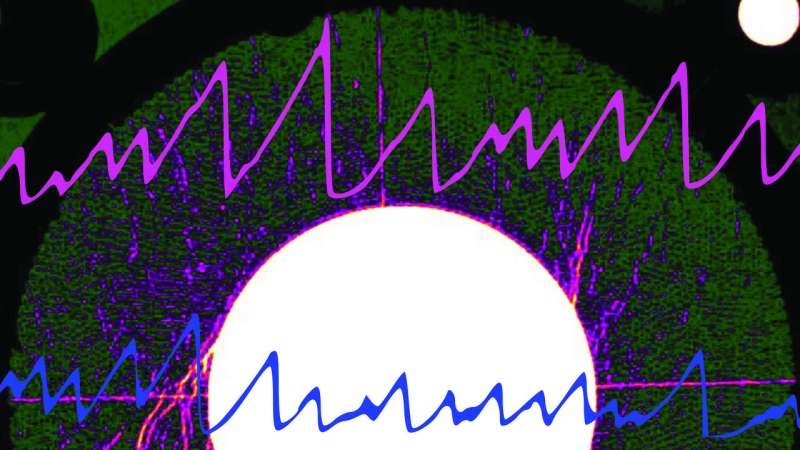Researchers listen for failure in granular materials

In a pilot study, researchers from North Carolina State University and Haverford College have used naturally arising acoustic vibrations—or sound waves—to monitor the state of granular materials. This passive approach represents a way to probe disordered or granular materials without disturbing them, and may enable researchers to forecast the failure of these materials.
Granular materials, like the ground beneath us, can fail through spontaneous events like earthquakes. But it is difficult to probe or measure these materials in order to predict failure. Haverford College physicist and former NC State postdoctoral researcher Ted Brzinski and NC State physicist Karen Daniels decided to examine sound waves emanating from the material to characterize the different vibrational modes of the material.
Vibrational modes are the ways in which something can oscillate, or move internally. A small molecule can only oscillate in a few ways, for example, but larger objects will have more modes, which are affected by both the locations and the masses of the components. In a disordered or amorphous system of granular materials, like dirt or gravel, the number of modes quickly becomes too large to either predict or measure directly.
However, each mode has a particular acoustic frequency associated with it. Brzinski and Daniels' approach measures the frequencies of the active vibrational modes in the material, giving them an acoustic snapshot of the material's overall "health."
To test their technique they created a granular system composed of 8,000 circular and elliptical polymer beads. They recorded the acoustic emissions from over 1,100 stick-slip events—which is what happens when tectonic plates slide past each other in an earthquake—and classified the frequencies present in acoustic signals associated with impending failure.
"Lower frequencies are associated with 'floppy' modes, meaning that there is a lot more movement, while higher frequencies are associated with stiff or rigid modes," says Brzinski. "What people have seen in model systems is that as you have more floppy modes than expected, the closer you are to losing rigidity. The slip occurs when rigidity is lost. Our tests confirmed these model system results—failures occurred when there were more low frequency modes than expected."
"But it's not just listening to see what sound frequencies are present; we need to look at the proportion of modes," says Daniels. "We know that materials close to failure have a lot of low frequency modes. Our method counts the numbers of certain types of modes in order to predict failure. The beauty of the technique is that you can monitor the system without any interference—just by listening. The method is fairly simple, and it may let us forecast the behavior of disordered materials."
The research appears in Physical Review Letters.
More information: Theodore A. Brzinski et al, Sounds of Failure: Passive Acoustic Measurements of Excited Vibrational Modes, Physical Review Letters (2018). DOI: 10.1103/PhysRevLett.120.218003
Journal information: Physical Review Letters
Provided by North Carolina State University



















